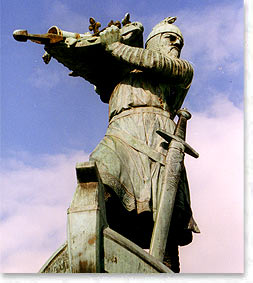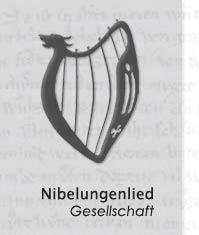|
The
Nibelungenlied
and Worms
from Ulrike Schäfer
|
.... |

Hagendenkmal, photo by Heinz Angermüller ..
|
Which role did the Nibelungenlied play for Worms in all that time?
Interestingly enough, it had sunk into oblivion for a long time, except for the Siegfried saga. There was a tumulus in one of the monasteries, framed with two megaliths. Emperor Frederick III is even said to have dug over the monastery grounds for the mortal remains of the hero, who was thought to be extremely tall. At the moment a young artist tries to rebuild the tumulus to remind us of this old story.
The Nibelungenlied itself tells that Siegfried was buried in the convent of Lorsch. The Mint, the stately town hall, which was destroyed by the French in 1689, was painted with characters from the Nibelungenlied. But it was only at the turn of the century that the epic came back into fashion, in fact when the Kaiser William II ? who himself greatly admired the Nordic culture ? brought up the topic when he visited Worms.
Cornelius Wilhelm Freiherr von Heyl, an influential leather industrialist, was inspired by this when he had the new town hall built, the Cornelianum. The painter Schmoll von Eisenwerth embellished the walls of the council hall with seven large-sized wall paintings. These exceptional pieces of art were destroyed in the second world war. Johann Hirt created a Hagen monument which has been a symbol of the city to this day, the Siegfried fountain, the relief "Siegfried entry" and the statue of Folker of Alzey. In 1906, Friedrich Hebbel's drama "The Nibelungs" had its première. The idea of staging festivals of national importance was especially fancied in the Nazi period. In 1937, 1938 and 1939, quite notable performances were delivered. Soon after the war, in 1956, a couple of open-air festival were put on again, which were less significant though.
|


